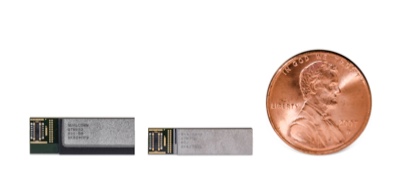The stage is set for the first 5G handsets to be launched in the first half of 2019 as Qualcomm and Ericsson just announced the successful completion of a 3GPP Rel-15 spec compliant 5G NR over-the-air (OTA) call over sub-6 GHz bands on a smartphone form factor mobile test device. About a month earlier, they did the same with a mmWave mobile device so both have been proven on commercial networks.
The sub-6 GHz OTA call was conducted in the Ericsson Lab in Stockholm, Sweden on the 3.5 GHz band. Similar to the companies’ first OTA calls performed using millimeter wave (mmWave) in both 28 and 39 GHz spectrum bands, which occurred in September, this sub-6 GHz call utilized Ericsson’s commercial 5G NR radio AIR 6488 and baseband products and a mobile test device powered by the Qualcomm® Snapdragon™ X50 5G modem and RF subsystem.
In December 2017, Ericsson and Qualcomm Technologies announced interoperability development testing (IODT) to help pave the way for commercial launches of 5G NR standard-compliant infrastructure, smartphones and other mobile devices in the first half of 2019. The successful 5G OTA calls using both sub-6 GHz and mmWave bands are critical milestones in the commercialization process as operators and OEMs around the world can now utilize the companies’ products to conduct their own tests in their labs and the field.
 At the same time, Qualcomm announced they are sampling a millimeter wave antenna module for 5G smartphones that is 25 percent smaller than the first QTM052 version announced in July, which was the first commercial 5G NR millimeter wave module for smartphones to be announced. This smaller module design was engineered to give smartphone manufacturers more options for antenna placement along the edge of the phone, without compromising the form factor or aesthetic design of the phone. Up to four modules can be integrated in the traditional smartphone form factor.
At the same time, Qualcomm announced they are sampling a millimeter wave antenna module for 5G smartphones that is 25 percent smaller than the first QTM052 version announced in July, which was the first commercial 5G NR millimeter wave module for smartphones to be announced. This smaller module design was engineered to give smartphone manufacturers more options for antenna placement along the edge of the phone, without compromising the form factor or aesthetic design of the phone. Up to four modules can be integrated in the traditional smartphone form factor.
All the QTM052 millimeter wave antenna modules integrate a phased array antenna with a 5G NR radio transceiver, power management IC and RF front-end components. Paired with the Qualcomm® Snapdragon™ X50 5G modem, the millimeter wave system provides beam forming, beam steering and beam tracking to improve the range and reliability of millimeter wave coverage. According to Qualcomm, despite shrinking the size by 25 percent, the new module maintains the same peak antenna gain as the larger module.
The QTM052 covers up to 800 MHz bandwidth in the 26.5 to 29.5 (n257), 27.5 to 28.35 (n261) and 37 to 40 GHz (n260) 5G bands. Qualcomm expects the antenna module to be in 5G NR smartphones with millimeter wave coverage launching in early 2019.
For 5G mmWave solutions, manufacturers need to deliver complete modules including the antenna arrays for both mobile and fixed wireless applications. While some manufacturers are still supplying individual devices and modules, the more highly integrated solutions are making it to market faster and seem to be the way that the leading companies are heading.


Recent Comments
Is there a reason the OMICRON Lab Bode...
Some of these are obsolete so will be...
Don't forget MegiQ: https://www.saelig.com/category/megiq-vector-network-analyzers.htm...
Hello Admin, Excellent stuff! Your level of quality work...
An interesting article but a bad use of...